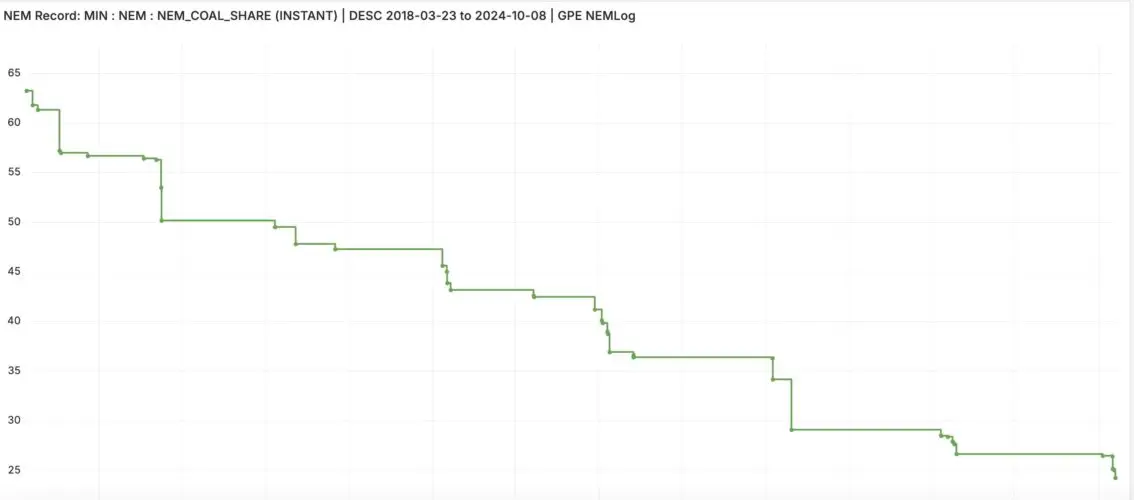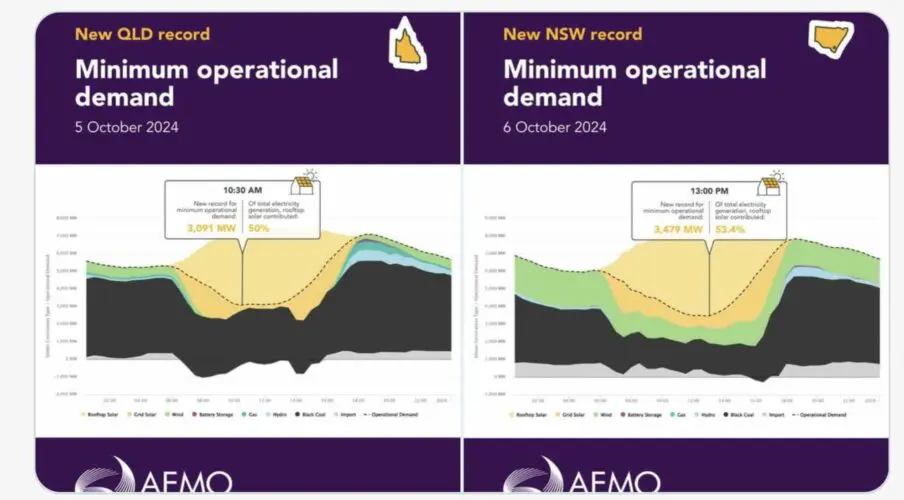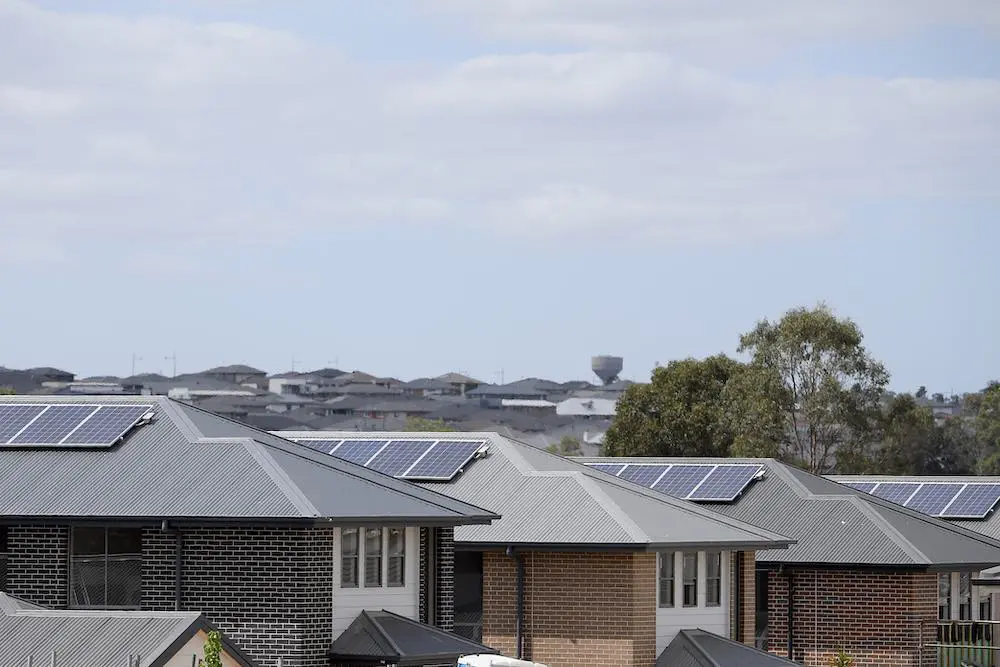The Spring cleanout of renewable production, fossil fuel generation and minimum demand levels continues across Australia’s main grid, with rooftop solar PV taking its biggest bite yet out of the nation’s ageing coal generators, and the share of fossil fuels also hitting a new low.
Possibly the most eye-catching of the numerous records to fall over the long weekend was the new peak for rooftop PV as share of total grid demand – jumping to 49.3 per cent at 12.45 pm on Saturday (AEST) and beating the previous peak of 48.8 per cent set in October last year.
The output for solar from the rooftops of homes and businesses was instrumental in setting, a half hour earlier, a new record share for all renewables – for the fourth time in a week – of 74.4 per cent. The share of variable renewables – just wind and solar – hit a new peak of 73 per cent.
That, in turn, pushed residual demand (the demand left after wind and solar take their chunk) to a new low of 4.71 GW at the same time, a staggering 9.5 per cent blow the previous minimum of 5.2 GW set just a day earlier.
On Sunday, the main records to fall were the share of coal (down to a new low of just 24.2 per cent), and the share of coal and gas (down to a new low of 24.9 per cent).

That might have only been a small reduction in the previous low set a few days earlier, but the context is important here – just six years ago, in 2018, the record low for coal generation on Australia’s main grid was 63 per cent (see graph above).
Those were the days when coal was “always on” – at least when the machines were not broken or in maintenance – but the huge growth of rooftop solar in the last half a decade has completely changed the economics of coal and the way their operate.
They are now obliged to ramp down their output, and bid negative prices to ensure at least a minimum level (usually around 20 per cent of their rated capacity at the most flexible of the machines) to keep online.
That could change again, of course, with AGL Energy announcing successful trials of switching coal generation units off and back on again within the same shift – something not considered possible until now.
Until that can happen on a regular basis, the negative prices and the reduced demand has other consequences, with wind and solar also being heavily curtailed because most have contracts with customers that do not allow them to operate while wholesale prices are negative.
On Saturday, there were record levels of curtailment in several states, and for large scale solar across the grid – 5.4 GW at 12.50pm (AEST) on Saturday, a near 9 per cent jump from the previous peak according to GPE NEMLog.
In fact, the amount of “potential” renewable output 0 the combination of wind and solar actually produced and curtailed – reached 107.5 per cent of grid demand at around the same time.
This shows that moments of “intantaneous” 100 per cent renewables are now possible – at least in terms of bulk power.
However, as we have written before, as long as most coal generators must run, the negative prices prices continue, and until the market operator puts in the protocols that allow for essential grid services to be provided by mostly inverter based technologies, that will not happen in practice. But it might only be a few years away.

Meanwhile, the market operator also took note of the new minimum demand records posted in the country’s two most coal dependent states – NSW and Queensland.
“The sun shining on family rooftop solar systems was powering more than half of total energy demand in Queensland and NSW this weekend,” it wrote on its Twitter/X account.
It noted that Queensland d set a new record of 3,091MW at 10:30am (AEST) on Saturday, and NSW set a new record of 3,479MW at 1pm (AEST) on Sunday.
One final table of interest is this one above from David Leitch, the principal at ITK Services and co-host of Renew Economy’s Energy Insiders podcast.

This table takes the output over the past week and annualises it, and shows that the share of coal fell to just 47 per cent, just ahead of “variable renewables’ on 44 per cent. Thrown in hydro and the share of renewables reaches 51 per cent.








